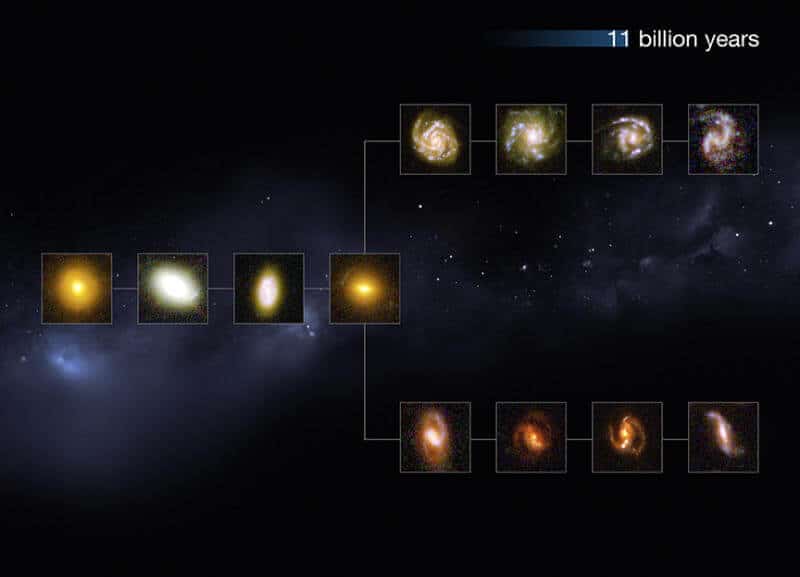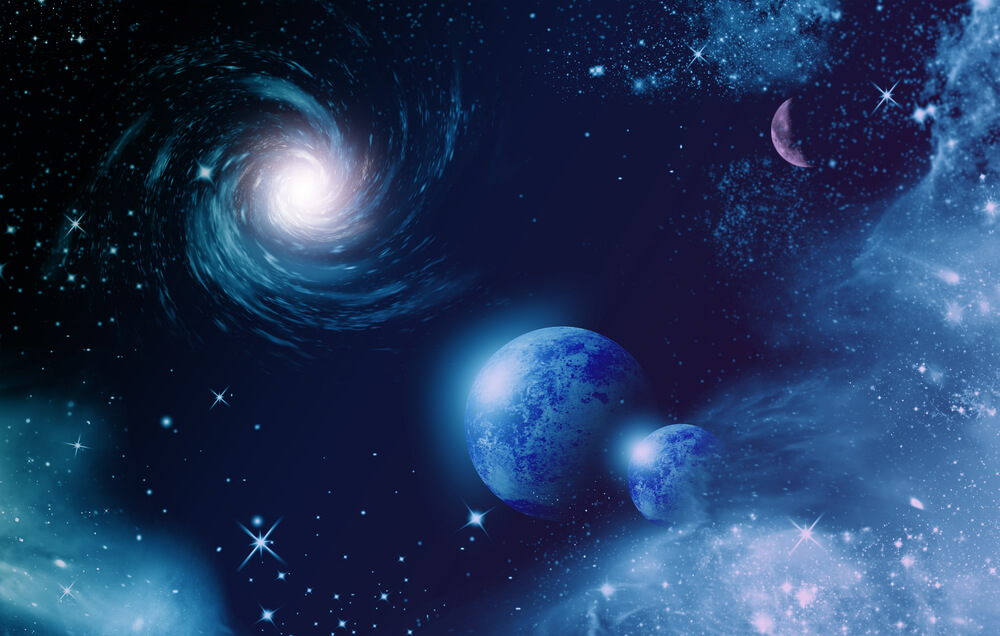"The discovery of these galaxies so far back in time is a significant discovery," says lead researcher Lee.

The study of the evolution and anatomy of galaxies, using the Hubble Space Telescope, allowed an international team led by researchers Bomi Lee and Mauro Giblisco from the University of Massachusetts to discover galaxies that appear to be mature, much earlier than was previously known - 11.5 billion years ago, when the universe was only 2.5 billion years old.
"The discovery of these galaxies so far back in time is a significant discovery," says lead researcher Lee.
The team members used two cameras - the wide film camera number 3 and the advanced camera for surveys (ACS). In addition, old photographs of the Hubble in the near infrared frequencies (CANDELS) - the largest project in the field of galaxies for 902 orbits of the Hubble - were also used to review the shape and colors of distant galaxies over at least 80% of the history of the universe. The results were published in the online version of the Astrophysical Journal.
Li says that the huge CANDELS database allowed her team to analyze a large number of these galaxies, a total of 1,671 consistently and in great detail. "The high resolution and sensitivity of WFC3 was a good source and allowed us to study ancient galaxies from the beginning of the universe."
Lee and her colleagues confirmed that the farther back in time they go, the shape and colors of these distant galaxies fit the visual classification system introduced in 1926 by astronomer Edwin Hubble, known as the Hubble sequence. It classifies galaxies into two main groups: elliptical and spiral, and various configurations of galaxies that look like lenses as a transitional group. The system is based on the ability of the galaxies to form stars, which in turn affects the colors, size and shape.
"The question of why modern galaxies are divided into these two types, and what caused the difference is a key question in cosmology," says Giablisko. "Another piece of the puzzle is that we still don't know why the dead red galaxies (in terms of the star formation process) are old and unable to form new stars, while spiral ones such as our Milky Way continue to form new stars. This is not only a question of classification, it is also related to the fundamental differences in the physical properties of the galaxies and the way in which they were formed."
Lee adds: "This was the key question of when, and over how long, did the grieving sequence form? To answer this, it is necessary to examine distant galaxies and compare them to closer ones, and examine whether they can be described in the same way. The Hubble sequence includes everything we know today about the process of creating galaxies and their evolution. It seems that we can see this sequence in place at a relatively early stage - 11.5 billion years ago."

Massive galaxies like the Milky Way are rare in the young universe. This prevented previous studies from collecting enough samples of mature galaxies to characterize them. Galaxies at these early times tend to be irregular, with no definable morphology. There are galaxies full of newly born blue stars, which sometimes show structures such as discs, bulges and irregular clumps, as well as red galaxies with little or no new star formation. Until now it was not clear whether the colors - blue or red - referred to the morphology of the galaxies, say the two.
According to the researchers, there was no evidence that the Hubble sequence existed more than 8 billion years ago, but the new observations indicate that the Hubble sequence also exists 2.5 billion years after the Big Bang, and now the data covers 80% of the history of the universe. "It is now clear that the mourning sequence was formed very quickly at the beginning of the universe, it is not the product of a slow process" comments Giblisco. "Now we need to go back to the theory and find out how and why this happened." http://www.sciencedaily.com/releases/2013/08/130815083953.htm

2 תגובות
Nice article and thanks for the translation
In my humble opinion, in order to understand the process of the formation of the galaxies, to know the processes and their development, a lot needs to be changed in the approach to the matter. One has to come to terms with the possibility of duality of gravitation, one also has to know the nature of dark matter. It's not impossible. The two issues are related to each other. You can read about the duality of gravitation in the article:
http://www.tapuz.co.il/blog/net/viewentry.aspx?entryid=2602065